Palletwood or Pallet Wood?
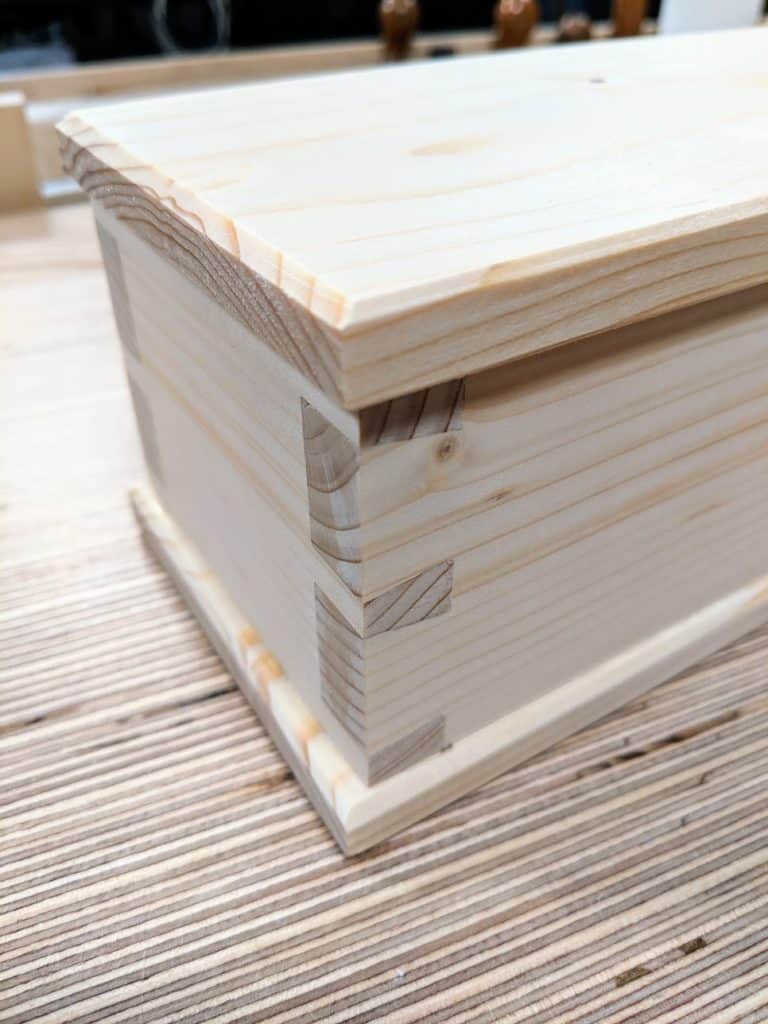
Of course, pallet wood is not a species, mostly it’s a low-cost shipping and distribution pallet material taken from fast-growing softwood timbers meaning pine, fir, spruce and similar. What is important to logistics companies is its low-cost availability and that it is sustainable and pretty much self-perpetuating. So often I see two camps when softwoods are discussed. Depending on the continent and the country, softwoods are often relegated to a class known as trash wood. I first discovered this when I moved to the US in 1985. On the one hand, you have those who classify the softwoods as purely a disparaged group and name, meaning of little if any value to the other class which of course comprises those using only fine woods and especially hardwoods. Of course, there is no such thing as trash wood. It’s mostly we who trashed it rather than the tree type. One thing about softwoods is that it provides us with a material well suited to certain products: who would make a bird table for feeding birds out of say oak, ash or cherry? Surely a discarded and redundant pallet and some rejected plywood sections fit the bill more readily. This is so fit for purpose it’s a perfect answer to upcycling.
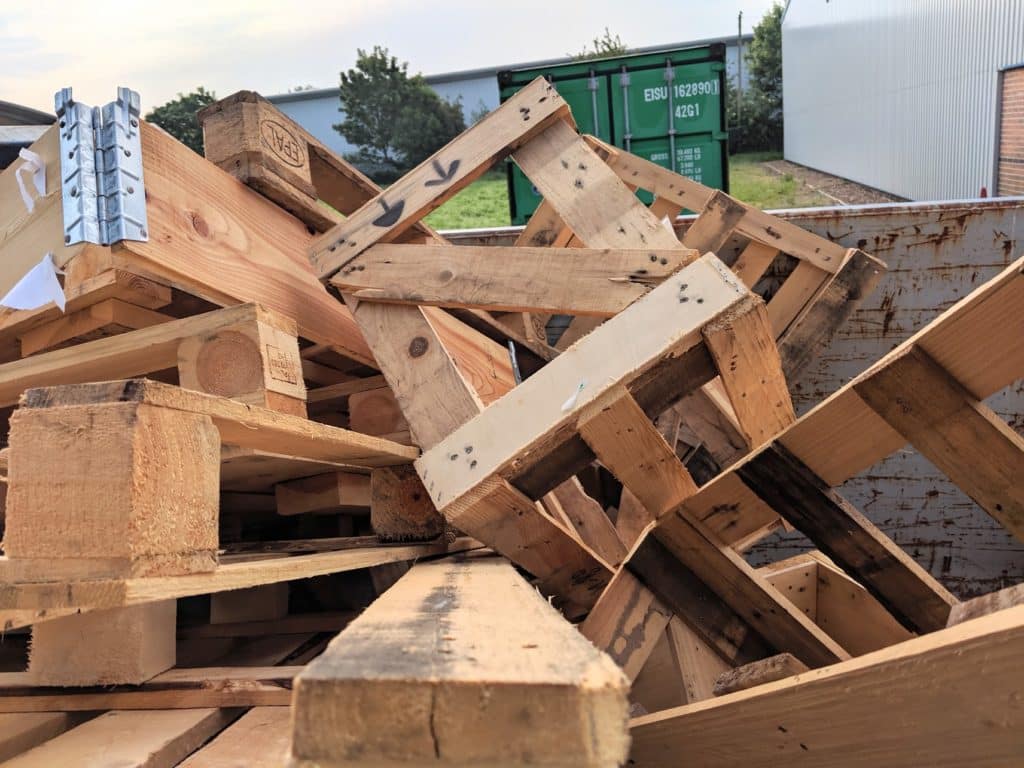
Last year I made my seed trays from old pallet wood. I also made garden boxes for growing vegetables, some trellis frames and this week my granddaughter’s bird feeding table for the back deck as she has taken a real sparkle to watch birds through the kitchen window. When we take a walk she constantly looks up at any flutter or beat of wings that catch her eye and tells me there’s a bird.
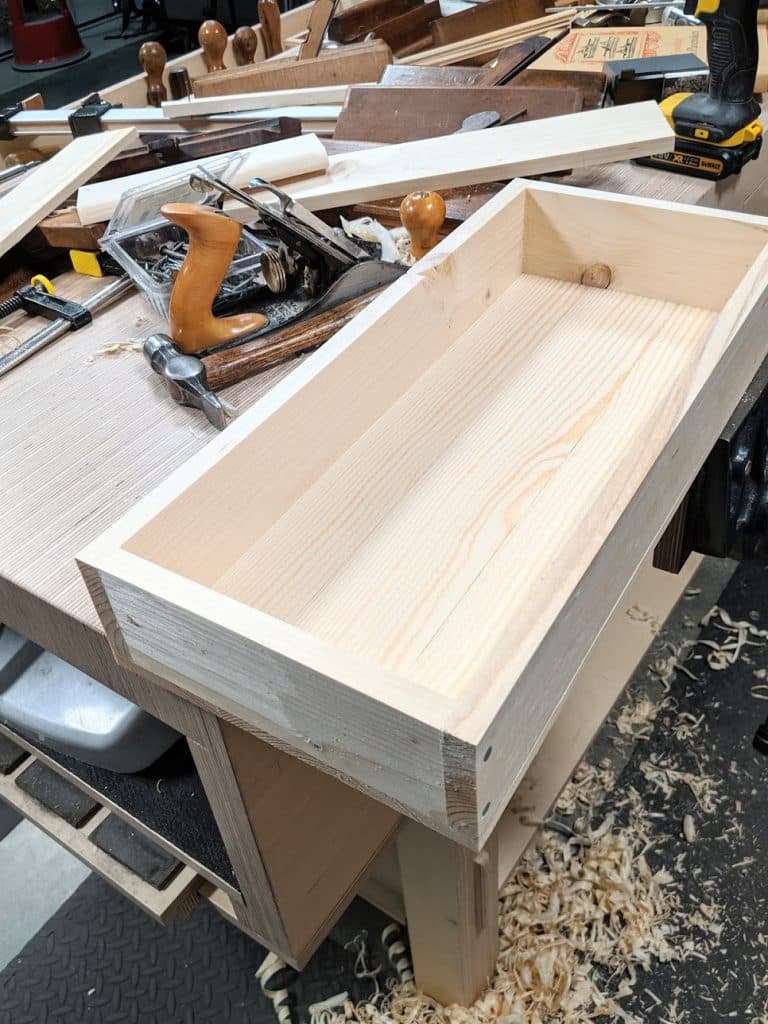
So far my efforts of using scrap pallets for useable wood have given me five years of planting my tomatoes and courgettes, beans and potatoes, peas and more. Basically it is just crosscutting to length and then screwing said parts together. It’s quick and easy and very, well, palatable. Predrilling and screwing the parts together and with a dab of glue to seat means it will also last for a few years and of course, it draws new, otherwise distant birds into an area where you and others can enjoy watching their antics. I did use a stem of 2×4 to cut my stem from, and the offcuts gave me the bracing. It took me two hours to make because of course there is no joinery in it. It’s all screwed together with an odd nail here and there. Simple cuts, mostly bandsaw work.
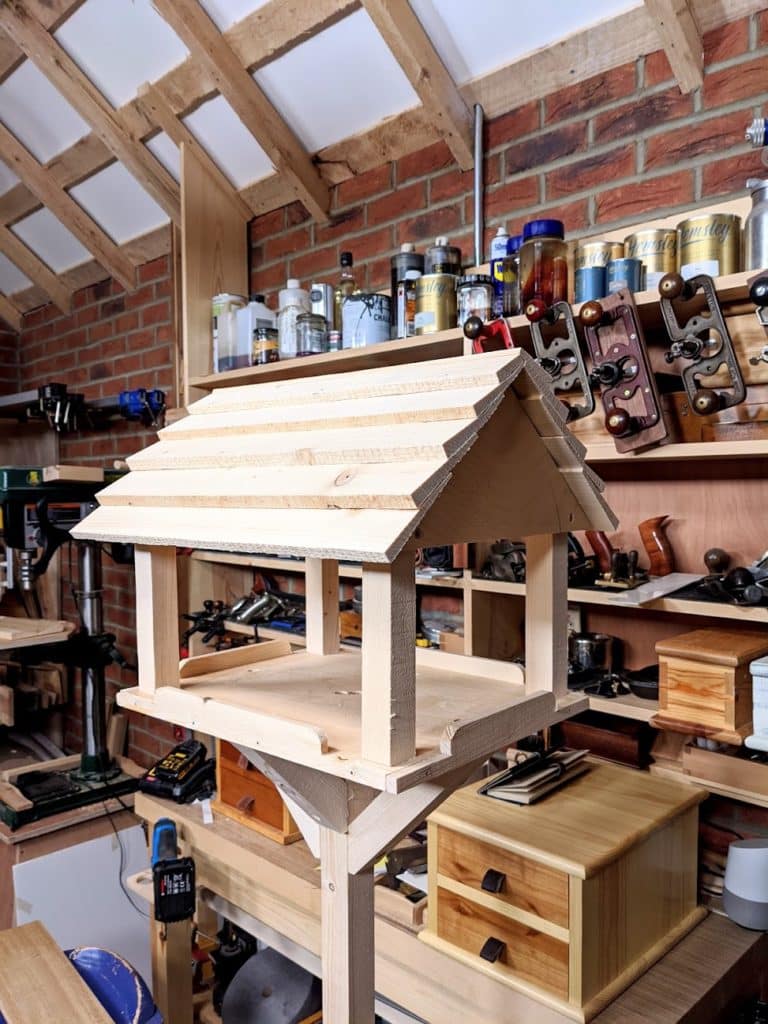
The delight, of course, was being down on my knees on the deck with my granddaughter and watching her insert the screws through the base so I could drive them with the drill-driver. And so the fascination with making begins! Soon it will be the spokeshave and the spatula as I pass on the opening steps for her to make the neck of a violin and a guitar.
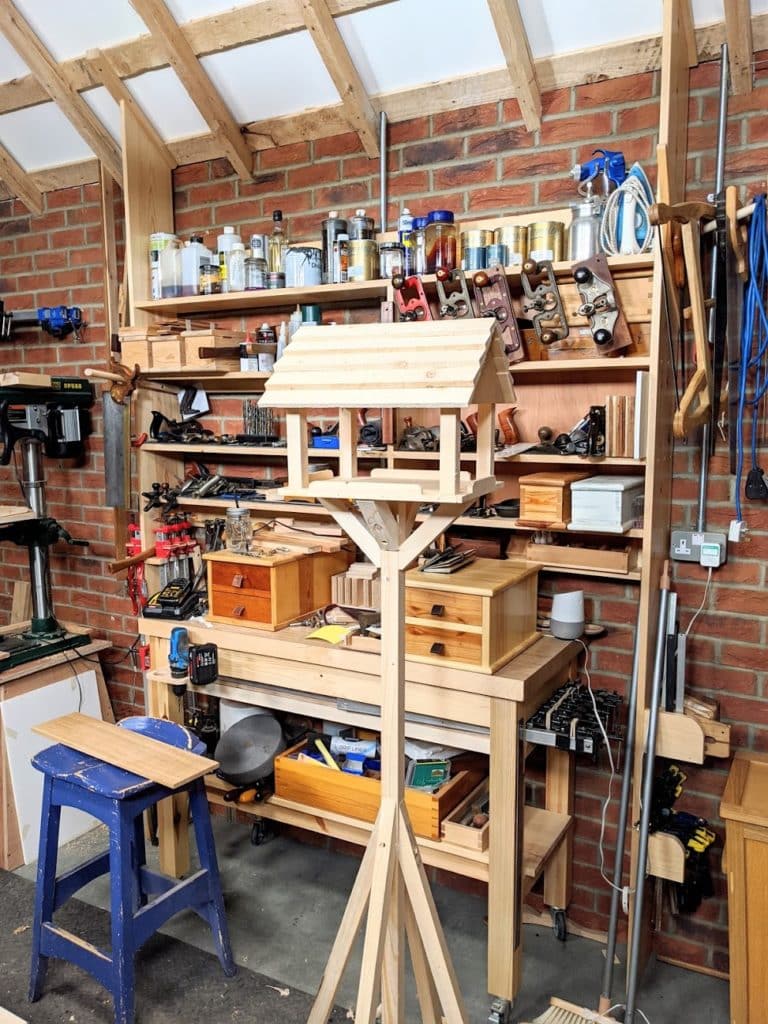


Yes, wood is wood – and wood is good. Very easy to make many things from. In today’s world we’re lucky to be able to send an receive materials – wood included – swift and easy all around the globe. So if we desire any specific species of wood we can just get it – as long as we can afford to pay for it. But there were surely times when it wasn’t that easy, and man simply had to use the wood that grew around him. In northern Scandinavia you’ll find spruce, fir, pine, birch and that’s it. So what else would you use to build a house or a boat when importing and transporting e.g oak would be a much too expensive and therefor impossible option? The answer is clear: You used what you had. And it worked!
Whether you live in Indiana or in India you’ll be able to look around you and see trees. With different characteristics, yes, but possible to process with simple tools. A fantastic gift from Nature, I would say.
And for sure: If I were making a feeding table for the birds out of fir but just missed one little piece to finish the project, I would look around to see if I could find something. And if the only suiting piece would be a piece of oak, cherry or walnut, I would certainly use it if there were no other choice. And there isn’t if a child is excitingly taking part of the building process.
Softwood is great for hand tools imo. its a fast and efficient way to build . It’s great to paint also even if it means covering neat dovetails and it’s cheap as chips
Actually, softwoods are not inexpensive to buy around the world, just in some places. Also, the point is that pallets do provide a free resource for many and that means that they can be working wood in some way.
I live in the U.S. and see a lot of useable wood either go to the dump or it is burned in a woodstove. I started using a scroll saw a year ago and have saved any piece of wood I have around, such as pieces of broken furniture, pallets, and drops from working around the house.
I wish wood is cheap as chips but sadly it costs as much as caviar.
We are spoiled in the US where we have so many woods to choose from.
Believe it or not Walnut trees were once considered nuisance trees and were cut down to make barns. The trees are poisonous to cattle and even now there are Sawmill’s that won’t process Walnut because the sawdust is not suitable for cattle bedding. Things have changed over the years but old ways of thinking are hard to dispel. I can buy a kiln dried spruce 2×4 for $2 at the big box store. I buy select boards that are quarter sawn or rift cut and let them acclimate to my shop.
Luckily for me most people don’t even look or don’t know enough about wood movement to care. But just think how inexpensive that wood must be for them to sell it at such low cost when you factor in the labor and transportation costs that are included. Anyhow people think if it’s inexpensive it’s not good for much.
My main concern with pallet wood is the toxic chemicals used to treat them. Some are pretty bad. But its hard to decode which chemicals were used, since a lot if times you can no longer read the marks etc. So not the wood I personally want to cut or expose to my kids or indoors. Maybe for a planter bed or something outside though.
Most pallets in the UK are heat treated (marked HT), no chemicals applied.
The pallet wood I use tends to be hardwood, used to transport granite from northern New England to my location: southern New England. I get them from countertop and flooring vendors. I’ve gotten a good mix of oak, ash, maple and hickory. None of these are chemically treated because they don’t have to be; it’s all domestic shipment.
Most, but not all, of the wood is “character.” knots and curled grain are prevalent. hand-planing is a challenge, but it can be done.
Always good to think through things, you’re right. This may be an issue in a global audience but I think it’s been covered often enough for people to consider where their pallet wood is coming from. As Tom said here, most wood used for pallets withing the UK are simply heat treated and marked as such. Searching out the discarders, look for what they ship. Electrical and machine parts are often shipped on better, kiln-dried wood.
I couldn’t agree more with you Paul. It would appear that by enlarge we have become a disposable society where the value of the material is dependant on where it was bought, and for how much.
I have been ‘re-using’ timber where possible for 45 years, whether it comes from a skip, pallet or old thrown out furniture or floorboards from someone’s house renovation. Once planed it never ceases to amaze when I discover the grain, pattern and how beautifully seasoned the wood is underneath.
Additionally, I collect pieces of trees that have been felled or just pollarded before they end up in a shredder. Once dried the wood can be sawn, joined into whatever size and made into boxes or turned on the lathe for gifts. I recently made a box from Apple, Spalted Beech and Laburnum.
Clearly there are times when the only option is to buy for that special type of wood that the project would benefit from, but that is an option in my opinion, not a rule.
I’d like to say, Paul, that not all pallets are made of soft wood: here in Argentina many of them are built of “quebracho blanco” (Aspidosperma quebrachoblanco), an extremely hard wood, very difficult to work with. Those made of soft woods like pine, are often treated to prevent bugs, fungus and the like, with coper, cyanide and arsenic, so, pieces made of, and dustwood may be very harmful. Be carefull!!!
I’m no expert, Carlos, but I’ve also read that Aspidosperma quebrachoblanco is treated with fungicides. From wikipedia – “Upon drying it tends to collapse, producing deformations and cracks, so the drying process is slow; the wood must be treated with fungicides.”
Hello Paul,
Can you screw into end grain now with these modern twin helix screws ? Back in the day (1970’s) it was aways frowned on but it seems the view has changed and I see this done a lot now.
In my experience screwing I to end grain is not as strong but usually strong enough. Drilling pilot holes will reduce the risk of splitting.
New screws are excellent, even over the last decade they have got better.
My ‘Best Pallet wood Find was a piece of ‘Juehung’, it was ‘done-age’ wood just cast aside after it was ‘done’ being used to support some heavy machinery and I found it in a desert spot next to a construction site. It’s a sun-baked state made it look at first like a piece of concrete but tapping it with a crowbar would make think it was ‘Cast Iron’ and it weighed in about the same, It’s heavy! Most ‘pallet’ woes are the ‘nails’ in them, but this was not used to hold anything, it just was placed under it to support it. After getting it home, and hitting it with a little TLC, I found I had a diamond in the rough! Dense and Teak-like.
In regards to the marks on pallets: they will all be made of kiln dried (heat treated ) wood so pests etc aren’t transported across borders. The other marks are for what is transported on them. That is where exposure to toxins can potentially take place through spills etc. Use caution and check on line to see what the marks mean. You may not want to use some material at all, even as a bird seed tray that could inadvertently poison something beautiful!
Nice bird table Paul did you video the making for release?
I understand that for most on here it would be a easy, but it would make a good introduction level project.
I agree Graham. This would make an excellent project for the common woodworking series and you could tweak it a little to include joints rather than nails / screews
The amount of stuff I have made from Pallet Wood is ‘Lots’. The wood is free but labour intensive. Many are garden related as in furniture or planters etc. Including Adirondack chairs and a wishing well. Also great for trying out ideas before committing to the expensive wood.
One other source to look into….When I worked in Construction…the ironworkers would get their red, or gray iron on flatbed semis…..rather than sit the iron on the trailer’s bed, they’d have layers of 2 x 3, 4 x 4s and sometimes even 6 x 12 beams……that was usually just tossed aside, unless the truckdriver wanted to keep a few for the next load….Otherwise, after the ironworkers got done with them..the pile would go into a dumpster….Oak, Cottonwood, pine, whatever timbers were handy. NONE of them were treated…dented maybe, but not treated.
Pallet treatment: look for the letters HT which means “Heat Treated
Avoid pallets with the letters MB which mean “treated with Methyl Bromide” – a nasty poisonous chemical to both insects and mammals.
Pallet wood isn’t always softwood. My local building supply yard stocks mahogany (sapele) decking. Guess what the pallets are made of. 5/8” roughsawn sapele slats and some type of yellow, close grain wood which I have yet to identify.
Tom, I think you are identifying that not all pallets are softwood but surely you accept that well over 95% of them probably are. I think I can safely say that’s the case in Europe.
Good article Paul!
I also make items from pallot wood, it’s a great resource.
Thanks again.
I use pallet wood in many projects. Benches, tables etc. I always look to see that they were made in the US because I cannot be certain what materials and chemicals were used in the production. It does take a little work in prep but I like the outcome. I use a great deal of scrap wood for projects, thus Scrap Wood Design.
pallet wood regularly costs me a set of planer and/or jointer blades. either from nails, staples or most commonly embedded gravel.
no thanks!
Use hand tools then 😉
Great post. I have heard of warehouse workers and truck drivers here on Prince Edward Island in Canada keeping an eye out for hardwood pallets. I have discovered two mahogany pallets, both clear and gunbarrel straight, under shipments of local potatoes, of all things. Someone said they would have come up from the tropics with sugar or rum. anyway. just discovered this blog after finding you on youtube searching for how to sharpen tools properly. I’m officially a fan. thanks for all your great content and dedication to your craft.
I haven’t tried palletwood yet but I often build in softwood, and to be honest it’s largely because it’s cheaper and more available for me at the moment. It’s also a privilege to build with because the smell constantly reminds me of magnificent spruce forests and snow capped mountains! And it is also teaching me to keep my tools very sharp. Thank you Paul
Hi paul, I recently got my hands on some old pallets. There are some great quality boards, the wood works as expected. But some of the timber behaves unusually, I have found the same to be true of scaffolding boards. Its springy, almost rubbery when worked. It looks like pine or another soft wood, planing is tricky to get started and seems to prefare a heavyer cut as a light cut struggles to catch consistently. It saws fine, chisels tend to compress and then the compression makes it very difficult to chop cleanly and the timber starts to break and crumble. Is there something I am missing? ( The timber was outside for 8 months to a year, it was left for three weeks in the workshop before I tried to work it).